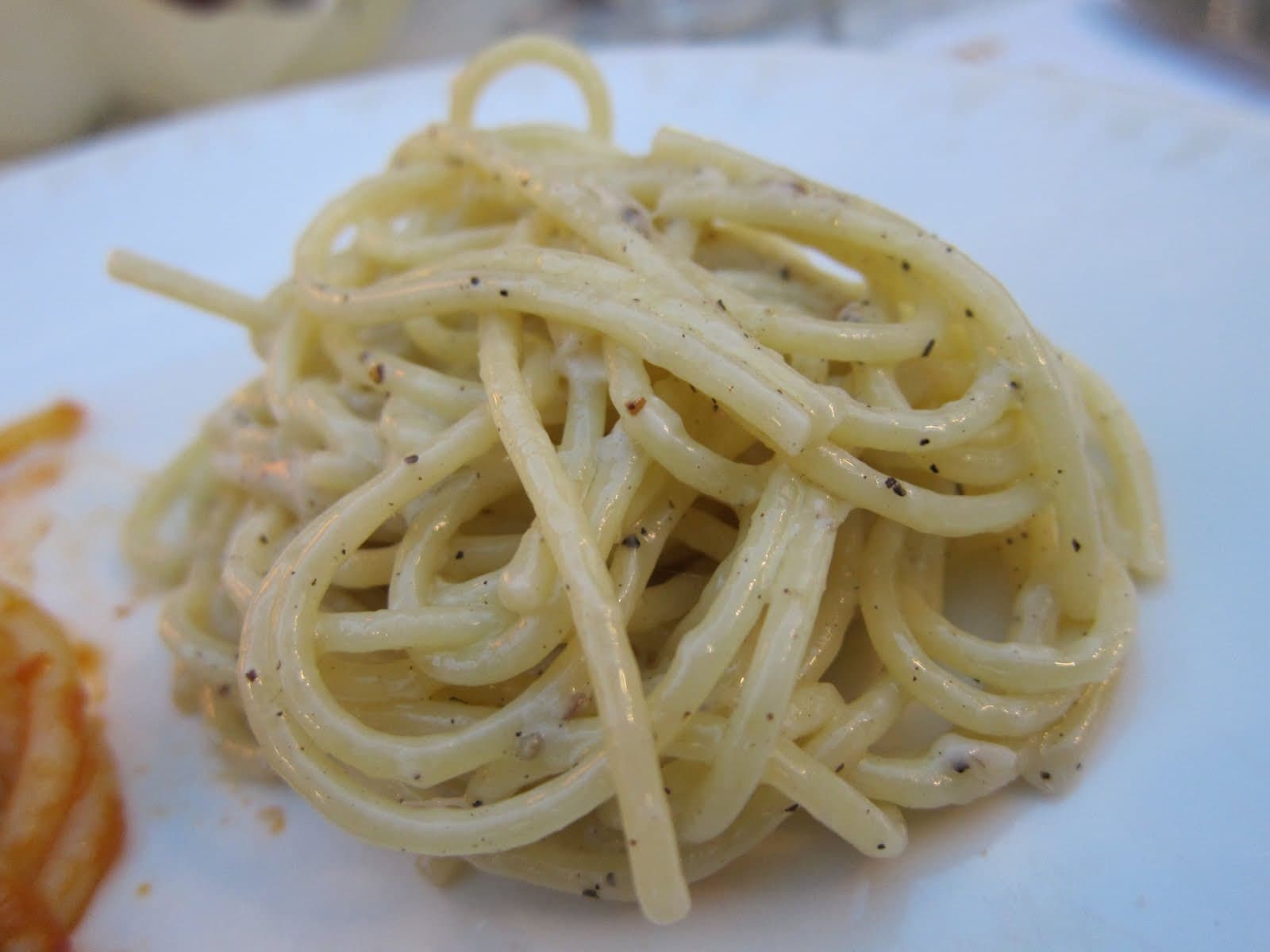
Cheese, Pepper, Pasta, Hot Water. That’s It.
While cacio e pepe is widely popular today, rivaling the love of carbonara, it is actually one of Italy’s oldest pasta dishes. Learn about the origins of the ingredients and the cacio e pepe history.
All About the Cacio e Pepe History
What is Cacio e Pepe?
Cacio e pepe translates to “cheese and pepper” as those are half of the ingredients of the dish. Dried pasta and hot water make up the other half.
The dish from Rome and is as Roman as the Colosseum. Actually, it might even be older than the Colosseum.
The Only 4 Ingredients
Cacio e pepe only requires 4 ingredients: cheese, pepper, dried pasta, and boiling water.
To get the easy one out of the way, boiling water existed since the creation of man-made fire. Ages ago.
Historians believe that pasta came from China over 4,000 years ago in the form of rice noodles. It traveled over to the Middle East and Europe where they used the local wheat to make flour. Ancient Romans were found to have made a pasta similar to today’s fettuccine.
The cacio, or the cheese, is specifically Pecorino Romano comes from sheep’s milk as “pecora” means “sheep” in Italian. This cheese has existed since 3,000 BC where it was found in the Mediterranean, North Africa, and Asia Minor.
The pepe, or black pepper, dates back beyond 1212 BC when it was found adorned on Pharoah Ramses II. For centuries, black pepper was considered expensive and precious. In fact, it was used as currency in Ancient Greece and Ancient Rome.
That’s it – hot water, pasta, cheese, and pepper. Absolutely no oil, cream, or butter. The secret and trick are all in the mixing and emulsion from the starchy pasta water and cheese.
Origins of the Recipe
Cacio e pepe is one of Italian cuisine’s oldest dishes. Food historians point to Roman shepherds as the creators of the pasta dish.
Sheep all of spring and summer months grazing in the open pastures and countryside. The shepherd remained alongside the sheep for the entire time. With that many months away from home, shepherds had to find practical ways to eat.
The 4 ingredients of cacio e pepe were incredibly easy to carry and impossible to spoil – as the cheese was made fresh from the sheep’s milk, pepper was light to carry, and pasta could be made fresh from flour and water.
On top of the ease of ingredients, there were nutritional benefits to the dish. The pasta’s carbs added on the calories and energy for the shepherd, and the spice of the pepper kept their bodies warm during cool nights.
From the pastures and countryside, the dish traveled to local taverns and much later all across the country by the 18th century.
Fun Fact 1: It’s been told that taverns made the dish extra dry so their customers would drink more wine to wash it down.
Fun Fact 2: Italy’s most famous chef, Massimo Bottura, helped his country recover from the devastating earthquake in 2012 which ruined millions worth of Parmigiano-Reggiano.
Instead of pecorino, he used the region’s crumbled parmigiano and local risotto rice harvest to create Risotto Cacio e Pepe. The dish was loved all over Italy and imitated around the world. Bottura brought about an international obsession with cacio e pepe and successfully saved the cheese and rice industry.
Sign up for my newsletter on the sidebar for blog updates and my travel insider tips! And, check out my vlogs on YouTube!


